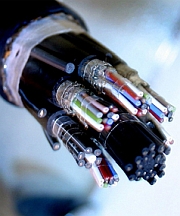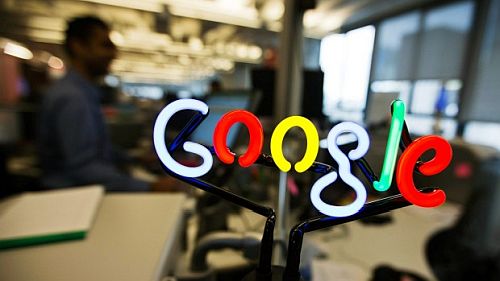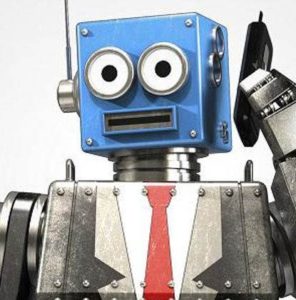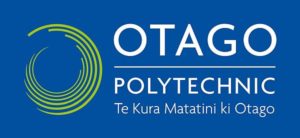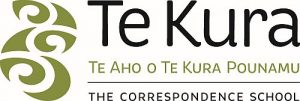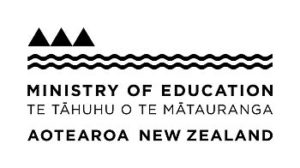New Technology Curriculum from 2020
The Ministry of Education has revised the Technology learning area to strengthen the positioning of Digital Technologies in the New Zealand Curriculum. Schools will be expected to fully integrate the revised learning area into their curriculum by the start of the 2020 school year.
The goal of this change is to ensure that all learners have the opportunity to become digitally capable individuals. This change signals the need for greater focus on students building their skills so they can be innovative creators of digital solutions, moving beyond solely being users and consumers of digital technologies.
“…the need for greater focus on students building their skills so they can be innovative creators of digital solutions,…” Blended Learning for the Fidgetal Generations
Technology – our grasp of the world
“…all new technologies are at root a combination of older technologies – and that this in turn traces an evolutionary process resembling life itself.” Tom Chatfield
We often think about technology as the latest innovation: the smartphone, the 3D printer, the VR headset. But, as Chatfield argues, it’s only by taking a longer view, that we can understand its entwining with our species’ existence. For technology is more than computers, cars or gadgets. It is the entirety of human-made artefacts that extend and amplify our grasp of the world.
After several billion years of Planet Earth’s history, the last few human centuries have been astonishing. We have introduced something exponential into the equations of planetary time – and that something is technology.
With ever-more technological possibilities, time and evolution are steadily speeding up and the rate at which they’re speeding up is itself increasing, as stated in Moore’s Law.”
As educators perhaps we could label our special focus on this evolutionary process “teachknowlogy”.
“As educators we could label our special focus ‘teachknowlogy'”.
Digital Developments
“The Web as I envisaged it, we have not seen it yet. The future is still so much bigger than the past.” Tim Berners-Lee
30 years ago Sir Tim Berners-Lee created the “public” internet as an information-sharing tool with a free source code, asserting that the internet must be an “open and democratic platform for all.”
Compared even to the development of the phone or TV, the Web developed very quickly. Thirty years on it’s hard to imagine a world without the internet. It is the first place many people go to when seeking answers to almost any questions. Then, of course, there was no Facebook, no YouTube, no Trademe, no Instagram. Now, according to Google, there are up to 60 billion webpages. Apart from questions of variable accuracy, the sheer amount of information available online is overwhelming.
Digital networks bring online communities, together by facilitating information and opinion sharing. But the gift of global, democratic connection also undermines traditional hierarchies in the media, government and education.
The democracy of the web – the opportunity for individuals to access information and have a voice online – is a double-edged sword which needs to be wielded with care.
In a digitised and globalised world the nature of work and everyday life is changing rapidly, with huge implications for education and training. Many areas of education are under the spotlight, including fast evolving digital developments.
In Dunedin plans are advancing for a new Centre of Digital Excellence (CODE) in Dunedin which will build on the city’s digital strengths, particularly in game and app development and associated sectors, including education and training. The business case is being led by Enterprise Dunedin, the University of Otago and Otago Polytechnic.
“…the education system doesn’t prepare students for the real world.”
Embracing an Innovative Future
“…the choice between cocooning ourselves in the past and shutting out all the inconvenient noises of change, or embracing a future based on innovation, disruption and using our brains is stark.” Alex Malley
There is a direct link between a nation’s future prosperity and its ability to leverage innovation and change to improve international competitiveness. Focusing on the downside of technological change deflects debate from the more important topic: how to best take advantage of the opportunities arising from the digital and other revolutions
The education progress which really counts will be at the retail level by education professionals adopting new technology to help grow brains and open minds in order to develop the technical and soft skills necessary for an innovative knowledge economy.
“…the more important topic: how to best take advantage of the opportunities arising from the digital and other revolutions”.
The Rise of Digital
“The Internet is the decisive technology of the Information Age, as the electrical engine was the vector of technological transformation of the Industrial Age.” Manuel Castells
The speed and scope of the transformation of our communication environment by the Internet has transformed the way we live, learn and work. Digital technologies, particularly the Internet, have become embedded into nearly every facet of life. These range from social interactions to shopping, entertainment, employment and last, but not least, education.
Associated advances in A.I. and engineering mean Science Fiction is now Science Fact. Drones, electric cars, 3d printing, hover boards, augmented and virtual reality are fast becoming our collective reality. Netflix recommends movies, Spotify organises the personal sound track of our lives and more and more work is passed over to AI.
As with all major technological changes, educators feel the depth of change but can be also overwhelmed by it.
“We tend to overestimate the effect of a technology in the short run and underestimate the effect in the long run.” Roy Charles Amara
Digital Disruption
“The true revolution of digital technology’s effect on culture is not that it replaces what has gone before, but that it shatters it like a supercollider, reconstituting the fragments into many different forms, some familiar and some completely new.” Michael Lascarides
Because the growth in computing power is exponential, as predicted in Moore’s Law 1965, innovation and disruption in all aspects of our lives, as well as the digital divides between us, are also accelerating. Society has been reshaped and the world of work is changing irrevocably in terms of what is done, where and by whom.
Access to technology and digital skills have become increasingly essential for people to fully participate in society and the
economy.
Teachers as Knowledge Navigators
“Technology and social media continue to disrupt education. Classrooms are morphing into maker spaces; STEM labs and media centres are filled with fascinating electronic gadgets. Teachers spend less time in front of the class and more time in the middle of the action”. 10 Big Ideas in Education
Digital technology has transformed has transformed the way we learn, work and live and there is a vast range of learning resources now available to anyone with access to a digital device. Teachers are more important than ever as knowledge map-makers and navigators in a world awash with digital data.
In the hierarchy of data, information, knowledge and wisdom the first two are freely accessible; not so knowledge and wisdom refracted through experience.
The key is to balance access via connected digital devices like laptops and palmtops with the mediating power of human cognition and imagination.
Teachers should not just leave learners to their own devices. These are simply tools to be used selectively, in an action learning setting, to create and produce not merely to search and play.
The real focus for ed-tech use should be developing the critical and creative thinking power of the free spine-top computer with which every human is equipped. New neuroscience insights can help teachers and learners alike tap this amazing resource.
The goal for educators ought to be to strike a dynamic teaching/learning balance by integrating technology into classroom learning and out of class projects at appropriate times in a way which optimised its positive benefits and minimise its harmful effects.
“Social media and the Internet more broadly have clearly had a rather revolutionary effect on not just what we take to be true but how truths circulate, what we believe, how we know anything.” Sophia Rosenfeld
Natural Intelligence > Artificial Intelligence
“The greatest challenge for AI is not the slow progress in top-down intelligence but the lack of attention to teaming intelligence that would allow the pairing of humans remarkable predictive powers with AI’s superior bottom up analysis of data.“ Alonso Vera, NASA
To get the most effective learning and doing from the dynamic interplay between Natural Intelligence (NI) and Artificial Intelligence (AI), it is important to understand the radical differences between even the crudest human mind and the most sophisticated computer.
We often get insights into the natural world by referring back from machines humans have invented. The age of AI helps us better understand NI and the power of the Spine-Top Computer and the importance of human development in the first 1,000 days.
Genuine breakthroughs are being made in AI, with experiments with small assemblages of artificial neurons designed to model the primate brain. Machine learning resembles the neural activity of intelligence but the human brain is still impossible to match.
“If you don’t do your own thinking Artificial Intelligence will do it for you. But, there is no guarantee that AI will think in your own interest at all.” Michael Hewitt-Gleeson
Building the human brain
“Childhood seems a laborious and expensive way to build a brain. There are algorithms that can master computer games better than any human in a matter of hours.,, The wonderful thing about the human mind is that it is robust and universal…. the binding problem.. is the task that faces every baby: how do you pull together pieces of information from the onslaught of the senses to make reality intelligible?…Oliver Moody, Science Correspondent, The Times
The goal for educators is to reach an appropriate teaching/learning NI/AI balance by introducing and integrating ed-tech into classroom learning at appropriate times in a balanced way with that optimises its positive benefits and minimise its harmful effects.
The key is to focus on the moving now, not the future which will unfold incrementally in its own good time.
“Childhood seems a laborious and expensive way to build a brain .”
Technology Uptake
The hype cycle encapsulated in Amara’s law, represents the maturity, adoption, and productivity of specific technologies.
The cycle is a graphical depiction of the maturity of emerging technologies through five phases from a technology trigger with early interest in a potential technology breakthrough, the peak of inflated expectations through early success stories, the trough of disillusionment as implementations failed to deliver, the slope of enlightenment as understanding of how the technology can benefit becomes more widespread and the plateau of productivity when mainstream adoption starts to take off, with the technologies relevance clearly paying off.
Educators need to adopt and adapt proven edtech from the ‘plateau of productivity’ to help grow brains and open minds in order to develop the technical and soft skills necessary for an innovative economy and an open society.
“New Tech always brings challenges – always; from the printing press – to the railroads – to mobile phones. These things brought huge benefits and huge risks. I think often the initial phase of these technologies is followed by a longer period of reflecting and learning. And I think that’s where the Internet is now.” Sheryl Sandberg, COO, Facebook
Rapidly Changing Workplaces
“…many of the major drivers of transformation…are expected to have a significant impact on jobs, ranging from significant job creation to job displacement, and from heightened labour productivity to widening skills gaps…the most in-demand occupations or specialities did not exist 10 or even 5 years ago…” – Work Economic Forum 2016 report The Future of Jobs
The WEF 2016 report points out that the ability to identify and prepare for present and future skill requirements is increasingly critical for education and training organisations, businesses and individuals, both to seize the opportunities and to mitigate undesirable outcomes.
The OECD’s Learning 2030 framework builds on this and other initiatives. Specific hard skills and soft skills sets are in increasingly high demand.
There is a growing emphasis on digital literacy but also on critical thinking and problem solving, communications and collaboration, creativity and innovation, with an emphasis on flexibility and adaptability, initiative and cross-cultural interaction.
This reinforces the case for humanities in the era of AI. Curiosity, creativity and empathy are key elements of the innovation process.
“There is a growing emphasis on digital literacy but also on critical thinking and problem solving, communications and collaboration, creativity and innovation.”
Future Proofing Careers
“Future-proofing your career is less about picking a safe job and more about constantly updating your skills throughout your career.” Joseph Aoun, author of Robot-Proof: Higher Education in the Age of Artificial Intelligence
The forecast of a world where robots do all the work while humans play in a jobless Valhalla is a Silicon Valley pipe dream. But automation is drastically changing the nature of much productive work, with great opportunities for a well-educated professional minority in new high-tech businesses, but not for the majority who have been diverted from manufacturing into mindless service jobs with mediocre wages and little prospect for advancement.
Can education help you robot-proof your career? As artificial intelligence becomes both more useful and more widespread, workers everywhere are becoming anious about how a new age of automation might affect their career prospects.
For present and future employees, career future-proofing is less about picking a safe job and more about updating skills continuously.
21st Century Skills
“They are complementary to basic building block knowledge and skills like literacy and numeracy, not substitutes.”
21st century skills comprise skills, abilities and learning dispositions that have been identified as being required for success in 21st-century society and workplaces.
Far from “dumbing down” education many 21st-century skills are also associated with deeper learning based on mastering skills such as analytic reasoning and complex problem solving. The focus is not on content for its own sake. The test is understanding why and demonstrating how, not regurgitating what.
The sequence is the secret. The most effective learning comes from a parallel process of knowing and doing.
“The sequence is the secret. The most effective learning comes from a parallel process of knowing and doing.”
Learning Environments and Teacher Quality
“…it is not so much the architectural environment that matter in terms of outcomes for students; it is what we do for students within those physical environments that makes the real difference.” Lesley Murrihy
As well as what teachers do for student in whatever the learning environment, it is also what learners are encouraged to learn and do for themselves, either individually or in small groups, in a flexible range of learning settings, from teacher-led input to personal and team projects, with or without the use of enabling technology.
The process is just as important as the outcome in terms of acquiring and accessing knowledge and developing hard and soft skills. Education quality largely comes down to the quality of its teachers. There are more effective and less effective teachers in traditional classrooms, just as there are in Modern Learning Environments.
There is no point in having ancient teaching methods in either because teachers haven’t kept pace or aren’t given the support to upskill.
“The process is just as important as the outcome in terms of … accessing knowledge and developing hard and soft skills.”
Adaptive Leadership
“When life itself is changing dramatically, so must we and so must the learning process.” Leon E Panetta quoted in Dr Peter Smith’s Free-Range Learning in the Digital Age
Blended learning, combining active teaching methodologies and online learning, appears to improve students’ engagement, and produce better learning outcomes. Ed-tech is a key ingredient but not the beginning or the end of a balanced learning diet.
Apart from presentational, group action learning and DIY possibilities it provides teachers with planning tools to help them facilitate and track personalised education programmes for what Jude Barback calls the Fidgetal Generation with individual goals and pathways to get there.
There is a widespread need for adaptive, collaborative and distributed education leadership, with principals and senior colleagues practising best BES leadership principles by harnessing the ed-tech knowledge of teachers, students and community.
“Ed-tech is a key ingredient but not the beginning or the end of a balanced learning diet.”


